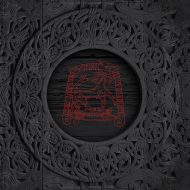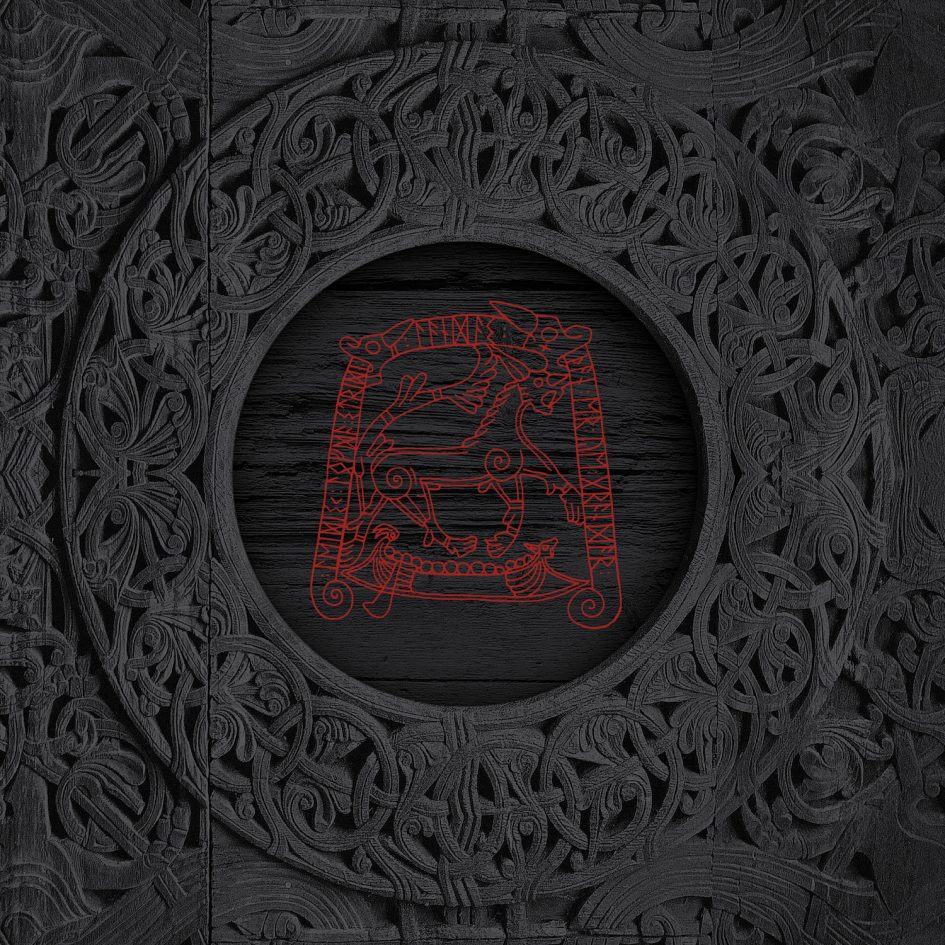 Árstíðir lífsins is bleakly grandiose pagan metal inspired by skaldic writings of the past. An altogether different league to the hordes of Viking metal bands that have swamped us in the past two or three decades. This is metal as if made by some enchantment and fused with the 1,000 year-old pages of some Icelandic saga and breathed through the souls, voices and instruments of the band. There’s still nothing quite like it, even if the formula has changed so little after 2010’s Jǫtunheima dolgferð. I suppose the question is, why would you tinker with something that is so perfect in pagan black metal terms as to be an almost religious experience to these ears? Yes, I am a total Árstíðir lífsins fanboy in my ever continuing journey to find the most metal incarnation of archaic and brutal ancient times and the gods that surely must have walked in them – at least so well imagined, just as with each passing Árstíðir lífsins release, as to be as real as the raging storms on the open sea and the rays of the sun bouncing off cloud-topped fjords.
Árstíðir lífsins is bleakly grandiose pagan metal inspired by skaldic writings of the past. An altogether different league to the hordes of Viking metal bands that have swamped us in the past two or three decades. This is metal as if made by some enchantment and fused with the 1,000 year-old pages of some Icelandic saga and breathed through the souls, voices and instruments of the band. There’s still nothing quite like it, even if the formula has changed so little after 2010’s Jǫtunheima dolgferð. I suppose the question is, why would you tinker with something that is so perfect in pagan black metal terms as to be an almost religious experience to these ears? Yes, I am a total Árstíðir lífsins fanboy in my ever continuing journey to find the most metal incarnation of archaic and brutal ancient times and the gods that surely must have walked in them – at least so well imagined, just as with each passing Árstíðir lífsins release, as to be as real as the raging storms on the open sea and the rays of the sun bouncing off cloud-topped fjords.
There is, however, apprehension when picking up each new album – this the second in just over a year and, alongside last month’s split with Carpe Noctem, clocking in at a grand total of nearly three hours across the three releases. Too much? Not within the confines of my scribblings on this screen it ain’t. The signature sound has held strikingly well across the past decade: bass vocals of Marcel Dreckmann – like finely polished granite – providing the perfect narration at extended intervals, the lashing of the waves, the thundering riffs and gloomy melodies that sweep in as salt-rendered winds might take you homeward bound on a journey that had been all but thought damned. Can Árstíðir lífsins still surprise? There’s always a moment in the first minute or two of each release when I wonder if it’s going to struggle to compete with the last. But the atmospheres alone, brought further to life by dark chants and classical instruments soon dispel the eternal cynicism for which I’m cursed. The layers upon layers of sound might then be enough in itself. But add to that the creative wizardry of this Icelandic-German three-piece and I sometimes wonder why this band is not far more celebrated.
Saga á tveim tungum II: Eigi fjǫll né firðir – the second part in the semi-fictionalised narrative created by the band based on the history and sagas of Norwegian king, and later saint, Óláfr Haraldsson. The story – central to the entire national identity of Norway – is a beast to take on and made all the more intriguing, in case you were wondering, by the use of Old Icelandic to enhance the hoary Iron Age soundscapes and some artistic license woven by the band to join the dots. If you’re not instantly captured by the acoustic accompaniments, the ancient bardic tones of Dreckmann and the faint trickling of mountain streams heard in the background then keep listening. There’s plenty more to come. Saga II, let’s call it to save some digital ink, is easily one of the most ambitious and varied of Árstíðir lífsins’ works to date. Far from labouring the effect he helps create, the extended, narrated preface to the story, in which Dreckmann’s theatrical tones are used to perfection against the ambient backdrop, cultivates the atmosphere nicely. Only the arrival of the jarring, blackened riff (which only makes its appearance in track three, but hold tight metal fans) breaks the delicately crafted almost meditative atmosphere like the striking of a hammer on an anvil.
Far from getting their heads down and completing the second part of this Dark Age drama in worthy and journeyman style, this is an effort that would impress the muses themselves (or is that the wrong pantheon?). At times weather-beaten black metal, at times melodic, soulful even, while at others the atmosphere flies on both acoustic and fully electrified wings. Árstíðir lífsins has a variety of armaments from the battering of the swirling third track Sem járnklær nætr dragask nærri to the soaring track that follows and breathes so much life into Saga II that it’s probably the point you know for sure the band really hasn’t let you down. Then, as the baleful narration of Um nætr reika skepnr segues into the pounding Heiftum skal mána kveðja, there’s delicate change in tone that sees the album brought to new levels of ambition with bludgeoning realisation that Árstíðir lífsins’ creative energy is far from spend. Mesmerising and tribal, the band seems to be channelling everyone from Pink Floyd and Seamus Heaney to Moonsorrow and early Mayhem. At that point it becomes increasingly hard to break from the music and come up for air. The final 30 minutes or so is almost impossible to pull away from as the band provides a salutary lesson on how to ramp up the atmosphere in 75 minutes without losing momentum.
Looking back I can pretty much spread the love across all five of the main releases – although 2014’s Aldafǫðr ok munka dróttinn comes out of the blocks pretty swiftly for anyone that wants a trial by fire into the band’s discography. This is one provides itself considerably more breathing room, but is no worse for it. Árstíðir lífsins’ latest release may not be for those steadfastly clutching the belief that there can be ‘too much’ ambience in a heavy metal album. But for the rest of us – especially those with a fascination for black metal music that tries to capture the dreams and hardships of past while delivering all the added atmosphere that only black metal can really deliver – this is a most pleasing way to spend 75 minutes.
(9/10 Reverend Darkstanley)

Leave a Reply